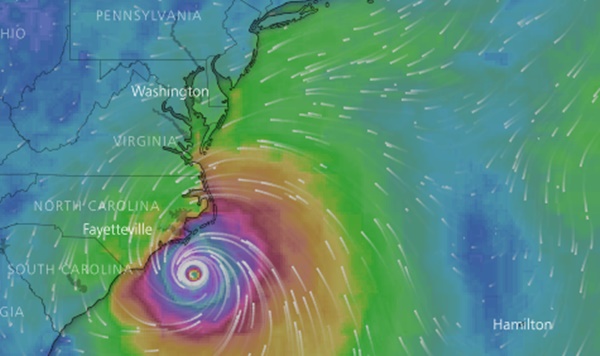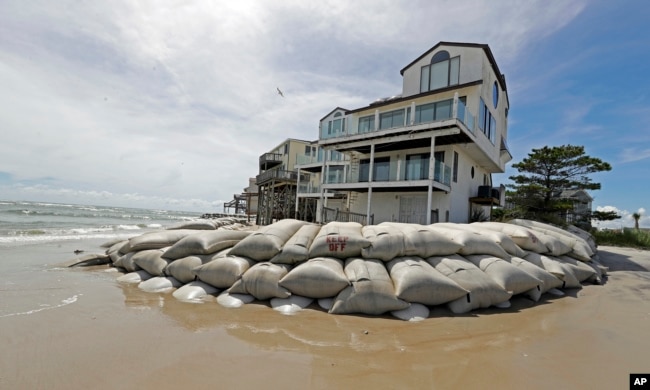VOANEWS
The outer bands of Hurricane Florence are beginning to lash the North Carolina coast as the storm edges closer to the eastern United States. The storm is expected to linger, dumping several centimeters of rain in affected areas and causing widespread destruction.
Even though Florence has weakened to a Category Two system with winds of 165 kilometers per hour, weather forecasters warn that its size, along with life-threatening storm surge flooding, catastrophic flash flooding and prolonged significant river flooding, can be expected.
“Just because the wind speeds came down and the intensity of this storm came down to a Category 2, please do not let your guard down,” Brock Long, the Federal Emergency Management Agency administrator, told reporters Thursday in Washington.
Florence is currently moving to the northwest at 17 kilometers per hour. The forecasters say the slow speed will give Florence time to pound the Carolinas with bands of heavy rain. The forecast track has the storm moving slowly along the coast throughout Friday and into Saturday.
At last report, the storm was about 230 kilometers east-southeast of Wilmington, North Carolina and about 315 kilometers east of Myrtle Beach, South Carolina. People in the Carolinas had the daytime hours Thursday to complete their final preparations to ride out or escape the storm.
Forecasters also say the storm surge – or wall of water – that the hurricane’s winds and forward movement push on shore, could cause normally dry areas to be flooded by up to 4 meters of water moving inland.
Forecasters say surges up to 4 meters could inundate Cape Fear, North Carolina to Cape Lookout, North Carolina, with smaller surges ranging from half a meter to 3 meters in coastal areas from Edisto Beach, South Carolina to coastal areas extending north into North Carolina.
Brock said the surges “are going to be major problem way up into the streams and tributaries that come out of sound areas.” He asked citizens in danger zones to heed warnings because “your time is running out.”
Because hurricane force winds extend 130 kilometers from the center, people on land will experience sharply deteriorating conditions long before the center reaches the coast.
About 10 million people live in areas that have been under either hurricane or tropical storm warnings and watches.
Leaders of the states in the path of the storm have warned people all week to evacuate the most susceptible areas. The governors of North Carolina, South Carolina, Virginia and Georgia declared emergencies to help speed up government aid efforts.
President Donald Trump said Wednesday that protecting lives is his “absolute highest priority.”
“We’ll handle it. We’re ready. We’re able,” he said. “We’re fully prepared. Food, medical, everything you can imagine, we are ready.”



